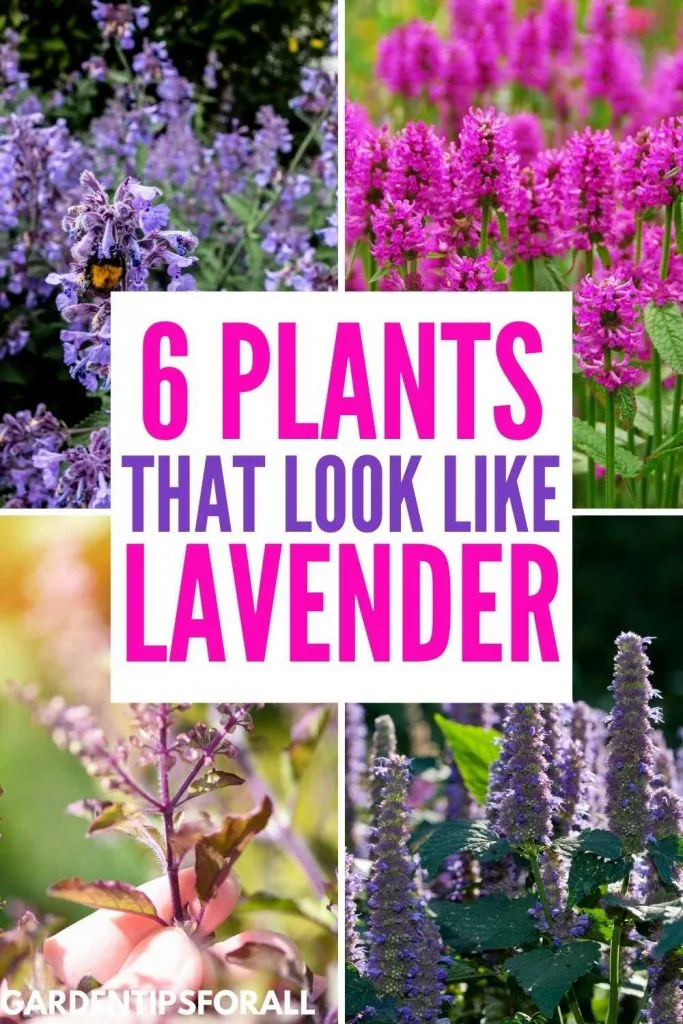Lavender Look Alike – 8 Plants that Look Like Lavender But are Not
Lavender is a flowering herb that is a member of the mint family. This flowering plant grows about 2 or 3 feet high and has silver-green foliage with upright flower spikes that may be lavender, blue purple, white or pink.
Native to the Mediterranean region this herb has adapted well to cooler regions around the world.
When harvested, lavender is used as a flavoring for food, for aromatherapy, in perfumes, sachets and as an ingredient in potpourri. It is also an attractive plant for gardens and around water features.
There are several different varieties of lavender. Interestingly enough there are several plants that look like lavender and here is a look at some of these lavender look alike plants.
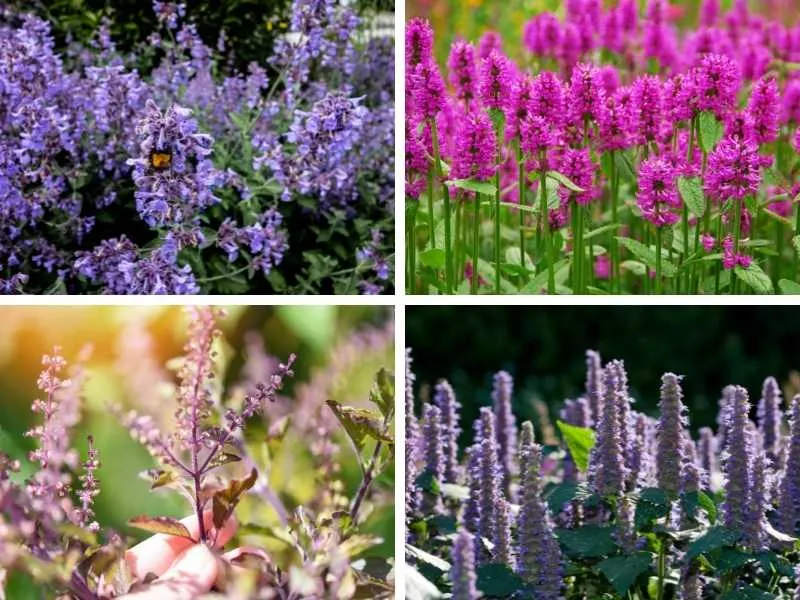
Related Articles:
- 8 Different Types of Spider Plants with Pictures
- Unique Plants with Green Leaves and Purple Underside
- 14 Flowers Similar to Peonies
- 9 Different Types of Dandelions and 4 Look Alike Flowers
8 Flowering Plants that Look Like Lavender (Lavender Alternatives)
#1. Meadow Sage

Meadow Sage is an ornamental herb that like lavender is a member of the mint family. This is a perennial upright plant that has a stem that is covered in soft hairs that contains essential oil.
The leaves of this herb are wrinkled around the edges and have a slightly unpleasant odor. The single stem holds the plant’s leaves and its flower spikes.
The flowers of this plant are small and showy and are either bluish-purple or purple in color.
This is a great plant that makes for a good border around your flower or vegetable garden since rabbits dislike the scent of this plant’s leaves. This plant grows best in zones 4 through 9 and blooms in early summer to fall.
#2. Hyssop
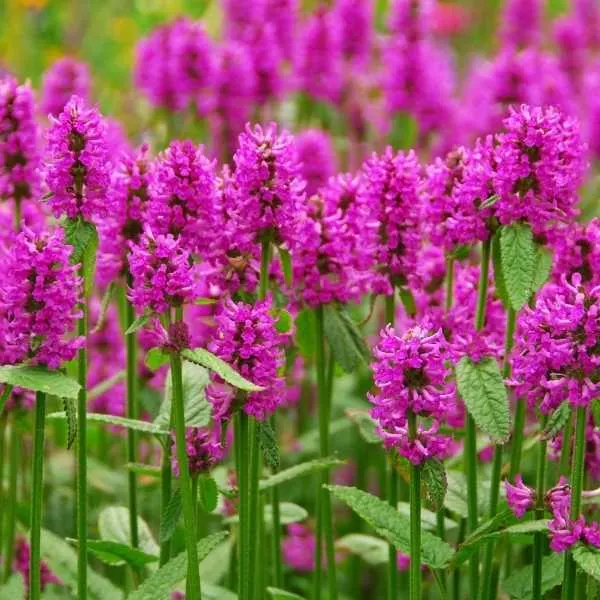
The Hyssop plant is also a perennial herb that is part of the mint family. This plant grows about 16 inches high and the stem has fine granular hairs.
This plant branches near the roots with 15 to 25 shoots. The leaves are narrow and the flowers are small and leafy with the petals covered in extremely fine hairs.
The Hyssop flowers may be blue or purple, pink, white or yellow. The flowers are sweet scented and so is the essential oil, however the oil does have a bitter taste.
This plant grows best in zones 6 through 10 and blooms in late summer and fall.
#3. Catnip
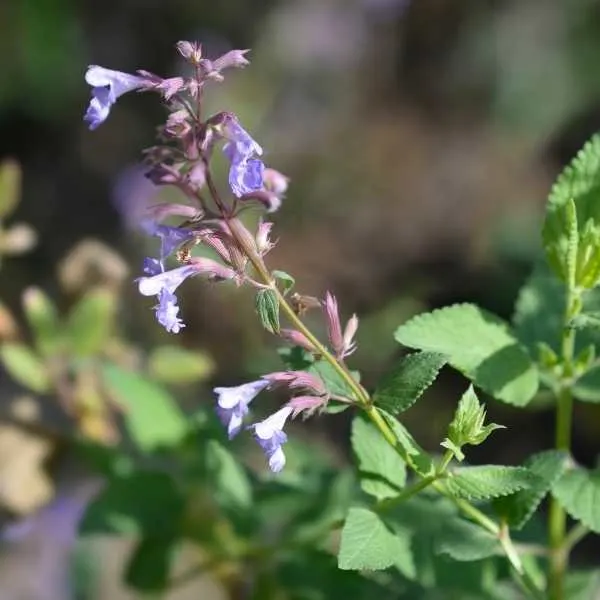
Another substitute for Lavender, Catnip is a perennial plant that is extremely easy to grow throughout North America. This plant has square stems and triangle or oval gray/green leaves with jagged edges.
The plants have flower spikes that bloom in late spring or early fall with the flowers being white with purple accents.
This plant grows between 3 ½ to 4 ½ feet high and grows best in zones 3-9 with blooms appearing late spring to early fall.
The plant grows best in full sun, but can handle partial shade. And it is not only a favorite of felines, but also has medicinal properties for humans as well.
#4. Russian Sage
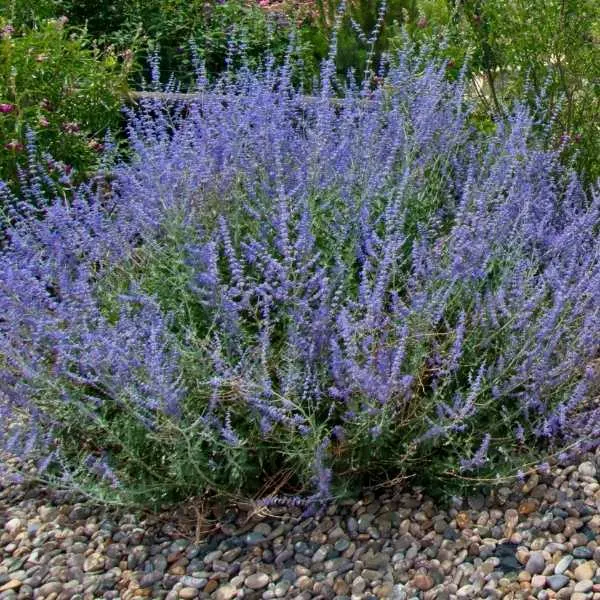
Russian sage is a plant that closely resembles lavender, but grows in extremely arid environments. This plant has silvery green scented foliage and bluish/lavender flowers that bloom from late spring to early fall.
This plant grows best in zones 4-10 and loves full sun and well-drained soil and grows to be 2 to 3 ½ feet high. It is easy to grow and seldom needs to be watered although it will need to be pruned to grow it’s best.
#5. Purple Giant Hyssop
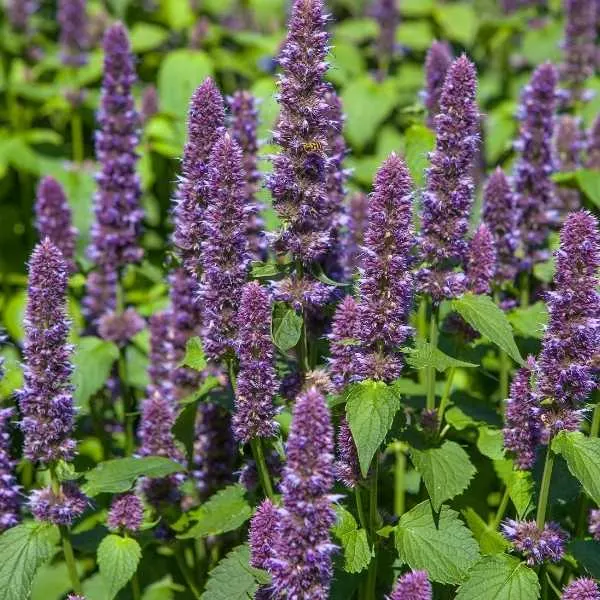
Giant Hyssop also referred to as Prairie Hyssop is a tall herb that is a member of the mint family. When mature, this plant can stand as high as 6 feet tall with pale pink or purple flowers.
This plant grows in sandy damp soil and prefers full sun or only partial shade. While it takes 2 years for the plant to flower the flowers do bloom from July to September.
Due to its height, this plant does well when planted along fences or stone walls and is extremely attractive to pollinators such as butterflies and bees.
#6. Pitcher Sage

Another member of the mint family Pitcher Sage is an herb that has pale green or grayish green leaves covered in granular hairs.
The flowers of this plant come in sky blue, white, pale pink or lavender with the petals also covered in fine hairs. The stem, leaves and flowers of this plant all have a pleasant scent that is attractive to butterflies and hummingbirds.
This perennial plant can grow anywhere from 3 to 5 feet tall. It blooms from mid-summer up until fall and likes full sun and well-drained soil.
#7. Rosemary
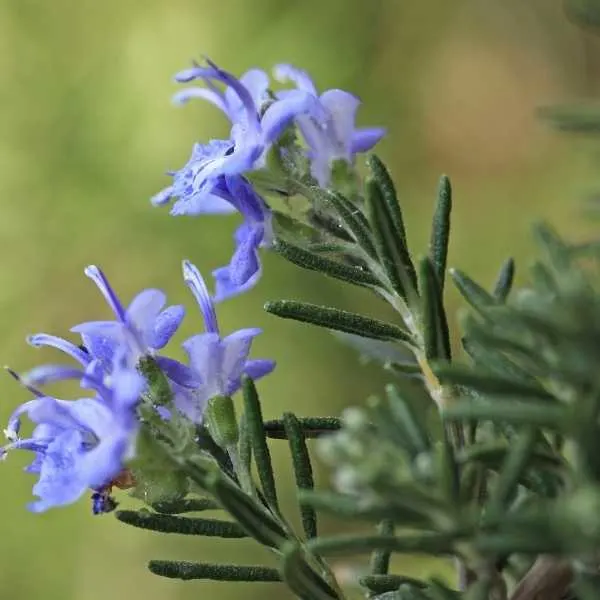
Rosemary is an herbaceous shrub with evergreen type leaves and white, pink, purple or blue flowers. This plant is native to the Mediterranean region and is used to add flavor in cooking as well as an ornamental plant.
The flowers of this plant bloom in late spring to early summer, though the flowers don’t bloom until the second year of the plant’s growth.
Rosemary is normally planted in the spring after the threat of frost has past and prefers sandy or loamy well-drained soil and full sunlight. This plant grows best in zones 8 through 10 and can grow from 2 to 6 feet tall.
#8. Holy Basil
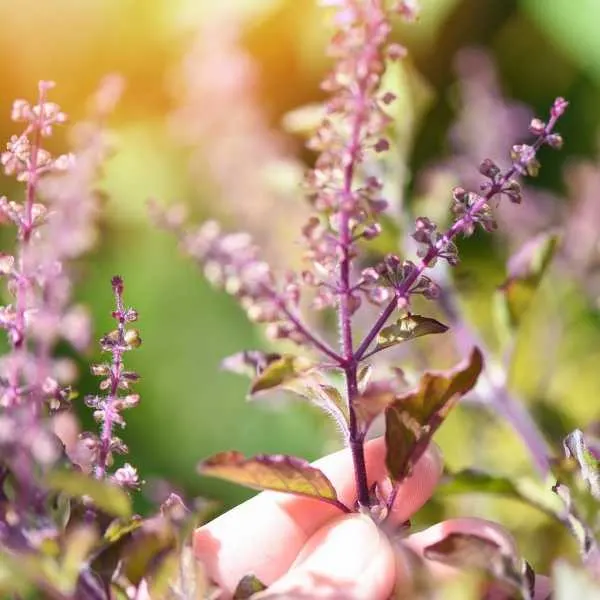
Holy Basil is an herb that is used frequently in Indian Cooking and medicine. This small aromatic plant is a member of the mint family that grows to a height of about 3 feet.
This herb has hairy stems and toothy green or purple leaves and either purple or white flowers that grow in a tubular spike.
This plant likes tropical or subtropical climates, but can be grown indoors almost anywhere. Holy Basil loves well-drained soil and lots of water. It also needs to be sheltered from the wind.
Final Thoughts on Plants that Look Like Lavender
You can choose to grow lavender or one of these lavender look alike plants. You will find that these lovely and colorful alternatives to lavender can add color and interest to your yard or garden. Since most of these plants will attract butterflies and sometimes birds, these plants will also add more color and even movement to your property helping to create a beautiful outdoor environment and giving you an up close view of nature.
